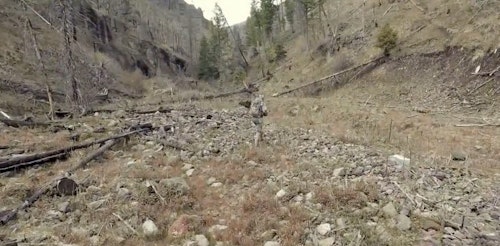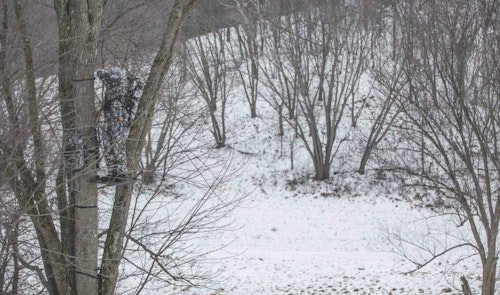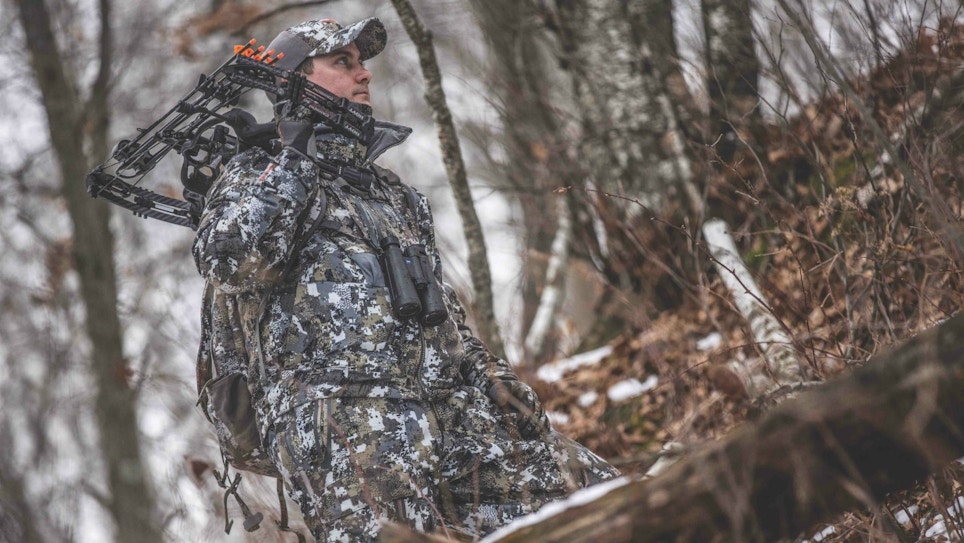It was unseasonably cold for early October. A fresh white blanket adorned the forest floor and the alfalfa field I was monitoring. The hunt took place near the beginning of my bowhunting career, and I spent every free afternoon overlooking that field.
I became cold within an hour, my toes and fingers first, then my core. Despite the severe discomfort, I knew the cold weather would move deer — perhaps even a taker buck — well before dark. That’s when a slight crunching noise pulled my attention to the hardwoods behind me.
The source of the noise? A darn nice buck for heavily hunted Wisconsin timber. The mainframed 8-pointer with stickers was heading for the alfalfa field, and his course would put him at 20 yards along the field edge. Slam-dunk.
My knees were quivering, and I was shivering like a wild man. When the buck popped into the field, I tried to draw my bow, but couldn’t. He offered shot after shot, but I just couldn’t tug back my bowstring. Of course, my cams finally rolled over as the buck was just leaving my effective range. I held off.
At the time of that encounter 16 years ago, camo clothing was camo clothing. Only a few companies were beginning to experiment with warm clothing tailored specifically for bowhunting, and it was too expensive for my teenage wallet.
Times and technology have changed. Research and development have brought on clothing solutions for every type of hunting imaginable.
To that end, choosing camo for your individual whitetail hunting needs can be perplexing. With multitudes of options available, you must consider and scrutinize all aspects of your hunting area and individual needs in order to choose camo apparel that will optimize your effectiveness as a hunter. To do that, consider the following five points.
1. Blend In
Camo’s original purpose was to blend hunters with their surroundings, giving them an edge on their prey. That hasn’t changed. However, there weren’t camo patterns available for every type of terrain and habitat in the early days like there are today. This fast-growing product category now offers so much that we’d be foolish not to shop for camo that best matches our hunting area.
Though some camo patterns offer excellent versatility, there isn’t a single camo pattern out there that blends perfectly with all landscapes. For example, a pattern that blends into the hardwoods of Virginia probably won’t blend so well on Wyoming’s prairies. Don’t settle for a camo pattern based on its popularity.
For best results, consider the landscape where you’ll be hunting and choose camo designed for it. Additionally, consider whether you’ll be hunting on the ground or from an elevated treestand as this also affects how camo blends in.
As a general rule of thumb, lighter camo patterns with substantial “white space” lend themselves toward treestand hunting where deer will view you against treetops and the skyline. In contrast, a darker pattern against the same backdrop often appears like a large, dark blob.
Generally, hunting at eye level is another matter. If you’re sitting stationary against a big dark tree, then darker camo with little to no white space will usually blend in. But, if you’re slinking through tall grass in Kansas, a solid tan suit or a camo pattern with a tan base color, such as Optifade Open Country, is better suited for the setting.
Given the diversity of terrain in even a single hunting location, there’ll inevitably be spots where your camo doesn’t blend as well as it does in others. That’s okay. The key is to identify the settings and backdrops you hunt most, and then choose a pattern to match.

2. Enhance Mobility
Most hunter know that bulky camo encumbers and restricts movement. Often, walking or moving in this type of clothing requires more effort. The extra effort instigates perspiration, and the additional movement needed to maneuver or draw a bow notoriously gets folks busted.
Today, most companies construct their hunting apparel around athletic cuts that maximize your range of motion. We can walk, move and draw our bows or raise our firearms unrestricted and the reduced effort decreases sweat and movement that would normally get us busted.
When trying on clothing from several manufacturers, make complex movements to identify any restrictions. If you recognize any, try another size or even another brand. Most restrictions occur at the hips, knees, elbows and shoulders. And the results make it difficult to operate and shoot your gun or bow and/or climb into elevated treestands.
Again, find clothing that doesn’t encumber or restrict, and you’ll be way ahead of the game.
3. Stay Warm
In northern climates where temperatures can dip into the single digits and lower, warm clothing is a must. Deer typically move well in cold weather. The question is, will you be warm and on stand when they move by your treestand?
Understand you cannot simply buy a jacket and/or pants that feel heavy and expect them to keep you warm. You must look at the clothing’s internal construction. Heavy insulation such as PrimaLoft or waterfowl down and a wind-deflecting membrane like Gore Windstopper are the standards for long hours of cold-weather hunting.
Of course, layering complements warm apparel systems. Look for base layers in the form of soft, supple and ultra-warm merino wool. Further, consider wearing only your base layers and packing in your heavy outer garments to be worn once you reach your stand. This will drastically reduce sweat, keeping your layers dry and in turn keeping you warm for the duration of your hunt.

4. Not Too Warm
If you plan to hunt from September through December and into January, you cannot expect one camo suit to suffice. Wearing clothing too warm for the weather can be as miserable as being frozen, plus getting sweaty increases odor production, therefore increasing your chances of being busted.
Camo clothing must be viewed as a system with many working parts. The best hunting apparel manufacturers offer tops and bottoms for all types of weather, and believe me, investing in a pair for all three stages of the season is worth it if you want to be the most effective hunter possible.
Now, jackets designed for warm-weather hunting should feature heat and moisture escapements in the form of back ventilation and zippered armpits. Likewise, pants should have zippered vents to promote breathability. Few things are more miserable than being trapped in hot, sweaty clothing during early season hunts.
5. Remain Silent
I’ve tested lots of different camo during the last 6 years, and I’m often amazed at how noisy fabrics can be. Noise has no place in the whitetail woods. Even basic movements such as lifting and drawing a bow should be silent.
Of course, walking and negotiating difficult terrain as you sneak up on deer or access your stands is another matter altogether. Expect your clothing to contact brush, saplings and limbs. Clothing that makes “swishy” noises on contact will be detrimental to your effectiveness, so always hunt for the quietest camo possible.
Final Thoughts
There was a time when camo was camo. That’s now history. We have dozens of options at our disposal, each designed for specific climates, settings, body builds and hunting styles. Don’t just settle for any old camo. Shop carefully and buy camo that fits your needs and landscape. Do this, and you’ll become a more effective hunter.






